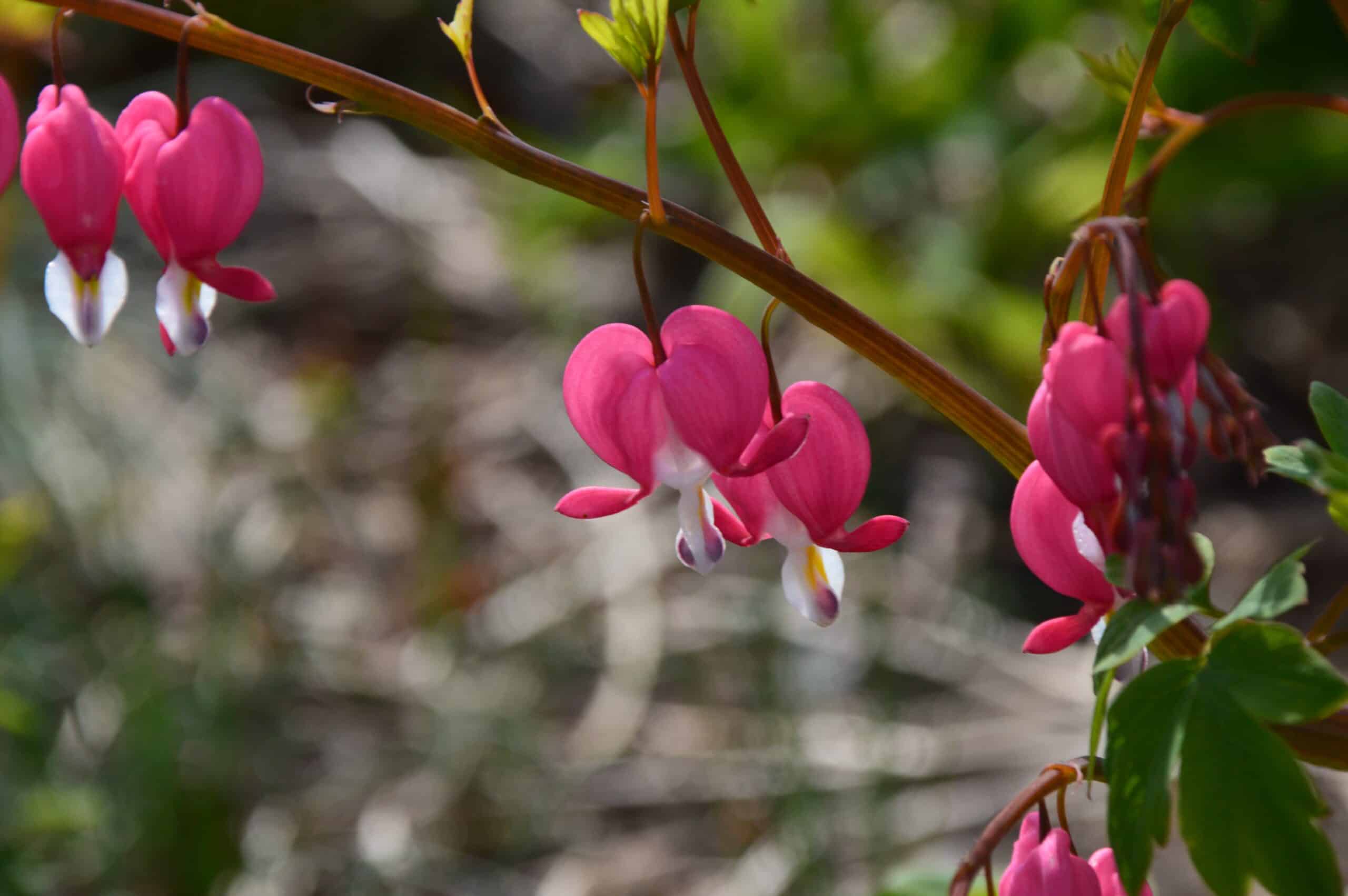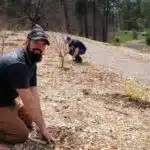The bleeding heart plant is one of the most beautiful and beloved plants in the garden. Its delicate flowers hang like a pendant from stems of soft foliage, creating an enchanting display that is sure to bring joy to any gardener. Despite its fragile appearance, this plant is surprisingly easy to care for and maintain, making it a great choice for both novice and experienced gardeners alike. In this article, we will cover everything you need to know about growing the bleeding heart plant, including essential tips on planting and care.
Whether you are looking to add a delightful pop of color to your outdoor space or just want to learn more about this unique flower, you have come to the right place. With just a little bit of effort, you can easily create a stunning display of these gorgeous blooms that will be the envy of your neighbors. Get ready to learn all there is to know about cultivating these beautiful plants!
With its vibrant colors and delightful look, it’s no wonder why so many people love growing bleeding heart plants in their gardens. This article will provide detailed instructions on how to care for and grow these lovely flowers so that you can enjoy them for seasons to come. Read on for all the information you need before getting started with your own bleeding heart project!
What Is Bleeding Heart?
Sometimes life has a funny way of bringing us just what we need. It’s almost as if someone up there is watching, because in our most desperate moments, we find a little bit of serendipity. Such is the case with bleeding heart – an incredibly beautiful flower that has been used for centuries to symbolize true love and compassion.
What exactly is bleeding heart? It’s a perennial plant with arching stems and clusters of delicate pink and white blooms that looks like a heart dripping with tears. The leaves are green, finely divided, and feathery in texture. Its Latin name is Lamprocapnos spectabilis, and it’s native to many parts of Asia, particularly Japan and Korea.
Bleeding heart plants are easy to care for; they thrive in moist soil and partial shade or full sun depending on their variety. They also don’t require much fertilizer and can tolerate some frost in the winter months. In short, they make excellent additions to any garden – whether you want something purely decorative or something meaningful to express your emotions!
Where To Plant Bleeding Heart
When it comes to planting bleeding heart, location is key. This plant likes a partially shady spot with lots of fresh air circulation. It should be planted in an area that will not be disturbed by people or pets, as its roots can easily get damaged. One way to ensure this is to place it in the center of a garden or flowerbed where it won’t be stepped on.
It’s also important to choose soil that drains well and contains plenty of organic matter. Bleeding heart plants tend to prefer slightly acidic soil with a pH between 6.0 and 7.0, but they can grow in neutral soils as well. Be sure to add some compost or other organic material when planting and periodically throughout the season for ongoing nourishment.
With the right location and soil conditions, your bleeding heart plant is sure to thrive! Plus, you’ll have the added bonus of beautiful flowers come springtime. Now, let’s look at ideal soil conditions for this plant so you can provide the best possible environment for it to flourish.
Ideal Soil Conditions For Bleeding Heart
When it comes to ideal soil conditions for a Bleeding Heart plant, there are a few key elements to consider. Firstly, the soil should remain moist but not overly wet – this is because Bleeding Hearts do not like their roots to get too soggy. Secondly, the soil should be well-draining and rich in organic matter such as compost or manure. Lastly, the pH level should be slightly acidic, between 6 and 7.
In addition to these ideal conditions, it’s important to ensure that you’re providing sufficient nutrients for your Bleeding Heart plant. Fertilizer can help support healthy growth and blooms, but make sure it’s applied infrequently so as not to damage the root system.
All of these requirements may seem daunting at first but with proper care and maintenance, you can create an optimal environment for your Bleeding Heart plant to thrive. With just a little bit of effort, you can ensure that your Bleeding Heart will look beautiful throughout the season! Moving on from these soil conditions, let’s explore how we can start planting our seeds…
Planting Bleeding Heart Seeds
Planting bleeding heart seeds is a great way to grow these vibrant, beautiful plants. But the process of planting them correctly can be tricky and should not be taken lightly. With careful planning and the right conditions, however, you can successfully plant and nurture your own bleeding heart seeds.
It’s important to start by finding the right soil for your bleeding heart plants. The soil should be rich in organic matter and have a slightly acidic pH balance that is between 5.6 and 6.6. You’ll also want to make sure there are adequate drainage holes at the bottom of your pot before you start planting.
Once you’ve found just the right spot for your seedlings, it’s time to get down to business! You’ll want to use a shallow container with moistened soil for best results when planting bleeding heart seeds. Gently press the seeds into the soil about 1/4 inch deep, then cover them with a thin layer of soil or peat moss. Water gently but thoroughly and keep the soil moist until seedlings emerge– usually within 14 days after planting.
Now that you know how to plant bleeding heart seeds, it’s time to learn how best to care for them once they’re established!
Caring For Established Bleeding Heart Plants
It’s time to get your green thumb working! Now that you’ve planted bleeding heart seeds, it’s time to learn how to properly care for established plants. It’s a lot like caring for a houseplant – with a few extra steps. Let’s dive in!
For one, these plants thrive in partial shade. That means they don’t need much direct sunlight. So, if you’re looking for someplace to put it, remember: the more shade the better when it comes to this plant. It also needs plenty of water and moist soil – think of it as a tropical-level humidity requirement.
To keep the soil moist and healthy, consider adding mulch or compost. This will help regulate moisture levels and improve drainage too – both key ingredients for keeping your bleeding heart happy. And while we’re talking about the soil, make sure you check its pH balance every couple of months or so. These plants prefer soil that is slightly acidic (between 5.5 and 6).
It’s also important not to overfertilize them – too much fertilizer can cause root damage and weaken the plant itself. Other than that, there isn’t much else you need to do when caring for established bleeding heart plants; just be sure to monitor them carefully and adjust as needed! With these simple tips, your bleeding hearts will be flourishing in no time – now let’s move onto watering them…
Watering Bleeding Heart
Watering a bleeding heart is essential to its health, as it can affect the plant’s growth and flowering. On average, bleeding hearts need about an inch of water each week. This statistic demonstrates how important it is to provide your plant with enough water.
When watering a bleeding heart, use lukewarm water and sprinkle it at the base of the plant, avoiding wetting its foliage. Doing so will help prevent fungal disease from developing on the leaves. Additionally, make sure that you are using a pot with drainage holes to ensure that any excess water isn’t retained in the soil for too long.
In addition to proper watering techniques, you should also be mindful of when you’re watering your bleeding heart. During the summer months when temperatures are hot and dry, you may need to water more frequently than usual in order to keep your plant healthy and hydrated. Now that we’ve discussed how to properly care for your bleeding heart through watering, let’s move onto feeding this beautiful plant.
Feeding Bleeding Heart
Feeding your bleeding heart plant is an important part of its care. This will ensure that it gets all the nutrients it needs to stay healthy and look great. To give your plant the best chance of success, you’ll want to provide a balanced fertilizer once a month during the growing season.
When selecting a fertilizer, look for one that contains nitrogen, phosphorus, and potassium. The ratio should be something like 10-10-10 or 20-20-20. You’ll also want to consider the type of fertilizer you choose – liquid or granular. Granular fertilizers are generally easier to apply, while liquid ones can be quickly absorbed by the plant’s roots.
When applying fertilizer, make sure that you don’t overdo it – too much could potentially burn your plant’s leaves. Also keep in mind that if you’re using a granular product, you’ll need to water it in after applying so that it can get into the soil and reach the roots. With these tips in place, your bleeding heart should have no trouble getting all the nutrition it needs!
Pruning Bleeding Heart
Pruning bleeding heart plants is an important part of keeping them healthy and looking their best. To start, it’s a good idea to remove any dead or damaged stems. This will help promote healthy growth by preventing any diseases or pests from taking hold. Additionally, removing old flower stems helps to encourage new blooms to form.
For a more drastic prune, you can also cut back the entire plant in early spring or late summer when it’s not actively growing. This will help keep the plant from getting too leggy and can even help encourage more blooms to form. When trimming, be sure to use sharp gardening shears and always sterilize them between cuts with rubbing alcohol or a 10% bleach solution to prevent spreading any diseases.
Pruning your bleeding heart regularly can go a long way in helping keep it looking its best and free of disease or pest infestations. With proper pruning techniques, you can help ensure that your bleeding heart looks beautiful year after year. Now let’s take a look at common diseases and pests affecting these plants.
Common Diseases And Pests Affecting Bleeding Heart
Do you want to ensure that your bleeding heart plants stay healthy and strong? Proper care and maintenance are essential for their longevity. This includes understanding some of the common diseases and pests that can affect these delicate plants. Let’s take a look at what you should watch out for.
First, be aware of certain fungal diseases that can occur when there is too much moisture in the soil or air. Examples include powdery mildew, crown rot, verticillium wilt, and phytophthora root rot. These problems can cause wilting, yellowing foliage, and eventual death if not treated promptly with fungicides or other treatments.
Additionally, pests can also be problematic for bleeding heart plants. Aphids and slugs are especially fond of them. Regularly inspect your plants for signs of damage such as chewed leaves or sticky residue that could indicate an infestation. If you notice any issues, apply natural means of pest control such as spraying with neem oil or diatomaceous earth to protect your plants from further harm.
By taking the necessary precautions to prevent and treat diseases and pests on bleeding heart plants, you can enjoy their beauty for years to come!
Winter Care For Bleeding Heart
Winter Care for Bleeding Heart is an important part of keeping these plants healthy and strong. The winter months can bring harsher conditions, so it’s important to be prepared. These steps will help you make sure your bleeding heart plants stay happy and healthy year-round.
It’s important to make sure the soil around your bleeding hearts is well-draining. That way, during a particularly wet winter, excess water won’t build up in the roots, leading to potential problems like root rot. If you have any standing water near your plants, you should clear it away as soon as possible.
Also, consider adding a layer of mulch around the base of each plant in the fall before it gets too cold. This will help insulate them from extreme temperatures and also keep the soil more evenly moist during dry spells. Just be careful not to get mulch too close to the stems as this could lead to rotting or fungal diseases. With these simple steps, your bleeding heart plants should make it through winter with ease!
By taking care of your bleeding hearts during the colder months, you’ll ensure they’re ready to thrive when spring comes around again.
Propagating Bleeding Heart
Sowing the seeds of success, propagating bleeding heart is a simple process that can spark a lifelong love affair with this garden favorite. Whether you’re looking to add color to your yard or want to share the beauty of these charming plants with friends, learning how to propagate bleeding heart is an important step.
Propagation typically occurs in spring and summer when temperatures are mild and stable. Start by collecting the seedpods, making sure they’re fully mature before sowing. The best way to ensure success is by placing them in a paper bag for two weeks and allowing them to dry out. After that, you’ll be ready to sow!
Before scattering the seeds, prepare your outdoor space by loosening soil and adding compost, then lightly covering the seeds with vermiculite or sand. Keep your new plantings moist until they sprout—it can take up to six weeks! Once they’ve become established in their environment, you’ll have plenty more blooms every year—just don’t forget to mulch around them during winter months.
With just a little effort and patience, propagating bleeding heart can bring colorful rewards year after year! Now it’s time to explore different varieties of this beautiful bloomer—each one bringing its own unique charm into our lives.
Varieties Of Bleeding Heart
There are a variety of bleeding heart species and cultivars, all with unique characteristics. The most common type is the dicentra spectabilis or ‘old-fashioned’ bleeding heart, which features delicate pink and white flowers in the shape of a heart. Other varieties include the fringed bleeding heart (dicentra eximia), which has pink and white fringed petals; and the ‘luxuriant’ bleeding heart (dicentra formosa) with its arching stems of red to pink blooms.
If you’re looking for something more exotic, there are also dwarf varieties like Dicentra scandens, whose foliage forms a delicate cascade of small blue-green leaflets; and Dicentra cucullaria, whose glossy leaves offset their clusters of white flowers. With so many types to choose from, gardeners can create a stunning display of colors and textures in any garden setting.
No matter what variety you choose, it’s important to provide your plants with moist but well-drained soil and plenty of sunlight for best results. Pruning is also essential—cutting back spent blooms helps promote healthy new growth while keeping your plants looking their best.
Companion Plants For Bleeding Heart
Finding the right companion plants to grow alongside bleeding heart can be a tricky but rewarding endeavor. When I was growing up, my grandmother used to put pansies and forget-me-nots near her bleeding heart plant. The vibrant colors of the pansies were complemented by the blue forget-me-nots, creating a stunning display that she swore brought luck and good fortune to her garden.
There are many other plants that can be used as companions to bleeding heart. Annuals such as baby’s breath, foxglove, and coral bells offer colorful blooms and foliage in shades of pink or white that will blend perfectly with the delicate pink flowers of bleeding heart. Perennials such as comfrey, lungwort, and bugleweed also make great companions for this charming flower.
By planting companion flowers around your bleeding heart plant you can create a visually stunning garden with an abundance of color and texture. A careful selection of different varieties will ensure that there is something in bloom from early spring through late fall for months of enjoyment.
Troubleshooting Tips For Growing Bleeding Heart
When growing Bleeding Heart plants, there may be times when you run into problems. To help with these issues, here are some troubleshooting tips. First off, it’s important to provide the plant with the correct amount of sunlight and water. Bleeding heart prefers partial shade and moist soil. If your plant is not getting enough light or water, the foliage may turn yellow or become limp.
In addition, it’s essential to check for common pests such as aphids and slugs. These unwelcome guests can do a lot of damage to your plant if left unchecked. Look for brown patches on the leaves or stems which could indicate an infestation. If you find any pests, try using a natural insecticide to remove them from your Bleeding Heart plant.
Overall, taking preventive steps and monitoring your plants regularly can help keep them healthy and thriving. By providing adequate sunlight, water, and pest control you’ll have beautiful blooms in no time! With that said, let’s move on to using Bleeding Heart in landscaping.
Using Bleeding Heart In Landscaping
It’s almost too perfect – a flower that symbolizes the emotion of love and compassion. Bleeding hearts are beautiful, romantic plants that make excellent additions to any landscaping project. To take full advantage of their beauty, let’s explore how to use them in landscaping.
As luck would have it, bleeding heart plants hold up well in shady spots where no other flowering plant might thrive. They also look great when planted near larger shrubs or trees, as the bright green foliage provides a nice contrast to the deep greens and browns of the surroundings. When used as border plants along walkways, they create an inviting entrance while also providing a soft background for other flowers in front of them.
These delicate beauties are also ideal for containers; their drooping blossoms spilling over sides bring a graceful touch to porches and decks. When placed near windowsills, they can bring soft color indoors as well as add texture to any room. It’s no wonder these little gems are so popular!
So if you’re looking for an easy way to spruce up your garden or home with some romantic flair, then consider adding some bleeding heart plants! With just a bit of care, you can enjoy their beauty for years to come.
Frequently Asked Questions
Can Bleeding Heart Be Grown In Pots?
The bleeding heart is a stunning and captivating flower, one that exudes beauty and poise wherever it grows. It’s an eye-catching specimen, a dazzling addition to any garden or pot – but can it be grown in pots?
The answer is – yes! Bleeding hearts can easily be grown in containers, so long as the pot is large enough and has well-draining soil. It’s important to ensure that the pot has plenty of room for the plant’s roots to spread out. You should also make sure that the container gets full sun or partial shade depending on your climate.
Watering your bleeding heart regularly during its growing season is also essential for success. Keep the soil moist, but not overly wet as this can lead to root rot. Fertilize every other month with a balanced fertilizer to promote healthier growth and more blooms. With proper care and attention, you’ll have a beautiful display of bleeding hearts in no time!
How Often Should Bleeding Heart Be Fertilized?
Bleeding heart plants are a beautiful addition to any garden. But like all plants, they require proper nutrition and care to ensure their health and longevity. One important part of that care is fertilizing. So how often should you fertilize your bleeding heart?
Fertilizing your bleeding heart plants is essential for healthy growth and blooms. You should fertilize in early spring, just as new growth begins to emerge, with an all-purpose fertilizer. This will help them get the nutrients they need to start strong. For the rest of the growing season, you can apply a balanced fertilizer every three weeks or so to keep them growing strong throughout the summer months.
In autumn, stop fertilizing a few weeks before the first frost, as this will help prevent any tender new growth from being damaged by cold weather. With regular feeding and proper care, your bleeding hearts should thrive and produce beautiful blooms year after year!
How Much Sun Does Bleeding Heart Need?
When it comes to bleeding heart plants, there’s a few things to consider when it comes to their care and maintenance. One of the most important considerations is how much sun they need.
These unique plants require partial shade and protection from direct midday sunlight. They can tolerate some morning sun, but should be placed in an area where they will receive dappled light throughout the day. Too much sun can damage the foliage and cause premature wilting.
It’s also important to keep in mind that these plants prefer moist soil conditions and don’t do well in overly dry or soggy soils. Regularly checking the soil moisture levels with your finger is a good way to ensure that your bleeding heart gets what it needs without over-watering or under-watering it. With the right amount of sun and water, you should have no problem keeping your bleeding heart happy and healthy!
Are There Any Other Plants That Should Not Be Planted Near Bleeding Heart?
It’s easy to get caught up in the beauty of bleeding heart plants, but it’s important to remember that these delicate blooms have some specific needs. One of the most important is making sure they don’t get planted near other plants that could harm them. Let’s take a look at what you need to know.
As the saying goes, knowledge is power. This rings especially true when planting near bleeding hearts – knowing which plants should be avoided can make all the difference. Not everything growing nearby will be a problem; however, there are a few key ones you should watch out for.
Most notably, avoid planting too close to other species in the Dicentra family or large-rooted trees and shrubs like maples and oaks. These can take away resources from your bleeding hearts and cause them to wilt faster than necessary. Additionally, keep an eye out for weeds like bindweed and quackgrass, which can strangle your plants if not managed properly. With these tips in mind, you’ll ensure your beautiful blooms stay healthy for years to come!
Is Bleeding Heart Toxic To Pets?
Bleeding heart is a beautiful, eye-catching plant, but it’s important to know if it’s toxic to pets before you bring one home. After all, our furry friends are part of the family and we want to keep them safe. Unfortunately, bleeding heart can be poisonous to cats and dogs if consumed.
Thankfully, there are steps that can be taken to protect our beloved animals from the dangers of this flower. For starters, make sure it’s planted in an area where your pet won’t be able to reach it or consume any parts of the plant accidentally. Furthermore, if you have cats or dogs that like to dig and chew on plants, consider growing bleeding heart in a container that can be kept out of their reach.
The bottom line is that while bleeding heart can brighten up your garden with its cheerful colour and blooms, it must also be handled with caution around pets. Vigilance is key when caring for these plants so that everyone in the family—including furry members—can enjoy them safely for years to come.
Conclusion
Bleeding heart is a beautiful and unique flower that will add a touch of elegance to any garden. It is easy to care for and can be grown in pots, as long as the soil is kept slightly moist. The plant should be fertilized regularly and given partial sun or shade, depending on its location. While it is not toxic to pets, other plants such as irises, ferns, and hostas should not be planted close by.
When tended to properly, bleeding hearts will bloom beautifully each year with their bright pink petals and heart-shaped center. To allude to the beauty of this flower, one might think of it like a romantic symbol of love; just as giving someone a bouquet of roses indicates adoration and affection, so too does a garden filled with blooming bleeding hearts send an enchanting message of devotion.
From its captivating appearance to its effortless upkeep, there are many reasons why bleeding heart has become so popular among gardeners over the years. With proper care and attention, this stunning flower will bring joy to any garden for years to come!





























